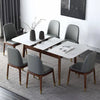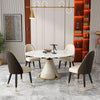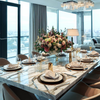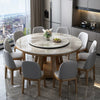How to Choose the Right Solid Wood Dining Table for Your Home

Introduction
In today's fast-paced and space-conscious world, the furniture in our homes must not only be aesthetically pleasing but also highly functional. This is where the multifunction table comes into play, a revolutionary piece of furniture that blends versatility with style, making it an indispensable addition to any modern home. The importance of selecting the right multifunction table cannot be overstated, as it can dramatically transform how space is utilized, whether in a compact apartment or a spacious house.
A multifunction table, by design, serves various purposes, adapting to your daily needs with ease. From being a workspace during the day to transforming into a dining table in the evening, or even folding away when extra space is needed, these tables offer unparalleled flexibility. The benefits of incorporating a multifunction table into your home are manifold. Not only do they save space, but they also offer a cost-effective solution for those seeking to minimize clutter and maximize functionality. With their customizable features, such as adjustable heights, built-in storage, or expandable surfaces, multifunction tables cater to a wide range of activities, making every square foot of your home work harder for you.
In this guide, we will delve into the myriad ways a multifunction table can enhance your living space, offering tips on choosing the perfect one to suit your lifestyle. From understanding the key features that define a multifunction table to exploring the various types available and how to make the most out of them, this article will provide you with all the information you need to make an informed decision. So, let's embark on this journey to discover how a multifunction table can transform your home, making it more organized, efficient, and, most importantly, tailored to your ever-changing needs.
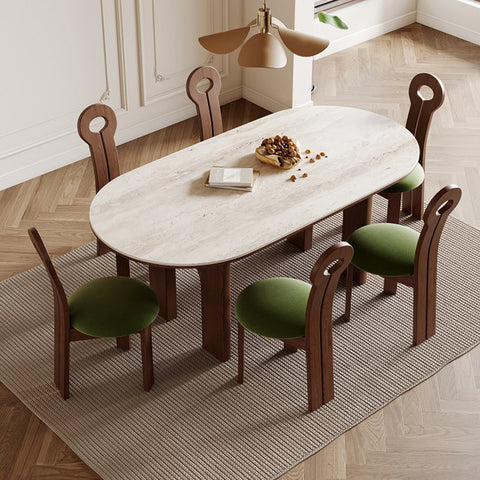
Understanding Multifunction Tables
What Makes a Table Multifunctional?
At its core, a multifunction table is designed to serve multiple purposes, acting as a chameleon within your home's furniture lineup. Unlike a conventional table that is typically designated for a single function, a multifunction table is a versatile piece that adapts to various needs and activities throughout the day. This adaptability is what truly sets it apart, making it an essential piece for contemporary living spaces. Here are the key features that define a multifunction table:
- Adjustability: One of the hallmark features of a multifunction table is its adjustability. This can include height adjustment, allowing it to transition from a coffee table to a dining table or a standing desk, and length adjustment, making it expandable to accommodate more people or contractible to save space when not in use.
- Storage: Many multifunction tables are designed with built-in storage solutions. Drawers, shelves, or compartments can hide away or organize everything from office supplies and electronics to dining utensils and table linens, keeping your space clutter-free.
- Versatility: The essence of a multifunction table lies in its versatility. It's not just about having multiple functions, but also about how easily it can transition between those functions. This versatility makes it perfect for small living spaces, home offices, dining areas, and even outdoor use, adapting to whatever the situation demands.
- Durability and Ease of Maintenance: Given their multiple uses, multifunction tables are constructed with durability in mind. Materials are chosen not only for their aesthetic appeal but also for their ability to withstand regular use and easy maintenance. This ensures that the table remains functional and attractive over time.
- Design and Aesthetics: While functionality is key, multifunction tables do not compromise on style. They are available in a range of designs, from sleek and modern to warm and traditional, ensuring there is a table to match every home decor style. The aesthetic appeal is crucial, as these tables often become the focal point of the space they occupy.
Understanding these key features helps in recognizing the value a multifunction table brings to your home. It's not just about saving space; it's about enhancing the functionality and aesthetics of your living area, making every day activities more convenient and enjoyable. As we delve deeper into the types of multifunction tables available and how to choose the right one, keep these defining characteristics in mind to guide your selection process.
Types of Multifunction Tables
Multifunction tables come in various forms, each designed to cater to different needs and spaces. Understanding the types available can help you choose the perfect table for your home. Here’s a closer look at some of the most popular types:
- Dining/Work Tables: These tables are perfect for those who need a space that doubles as both a dining area and a workspace. Often featuring adjustable heights or extendable surfaces, dining/work tables can be transformed according to the task at hand. During the day, they serve as a comfortable workspace. Come evening, they can be cleared and adjusted to host a family dinner, combining functionality with convenience seamlessly.
- Coffee Tables with Storage: Ideal for living rooms or small spaces, these coffee tables not only offer a surface for your beverages and magazines but also include storage options like drawers or shelves. This hidden storage is perfect for keeping living room essentials out of sight, such as remote controls, gaming accessories, or books, making them a practical addition to any living space.
- Convertible Desks: Convertible desks are designed to adapt to various needs, often transforming from a compact desk into a larger work area or even into a different piece of furniture entirely, such as a bookshelf or a dining table. These are particularly useful in small apartments or homes where space is at a premium, allowing one piece of furniture to fulfill multiple roles.
- Folding and Expandable Tables: Folding and expandable tables are the epitome of versatility. They can be expanded to accommodate additional guests for dinner or folded down to a smaller size for daily use, making them ideal for hosting and everyday living. Some models can even be folded completely flat for storage, freeing up floor space when the table is not in use.
Each type of multifunction table offers unique benefits, catering to the diverse needs of homeowners. When choosing a multifunction table, consider how you plan to use it, the amount of space available, and your home’s overall aesthetic. Whether you’re looking for a table that can serve multiple functions in a small apartment, a stylish yet practical piece for your living room, or a versatile workspace that can also host dinner parties, there’s a multifunction table out there to meet your needs.
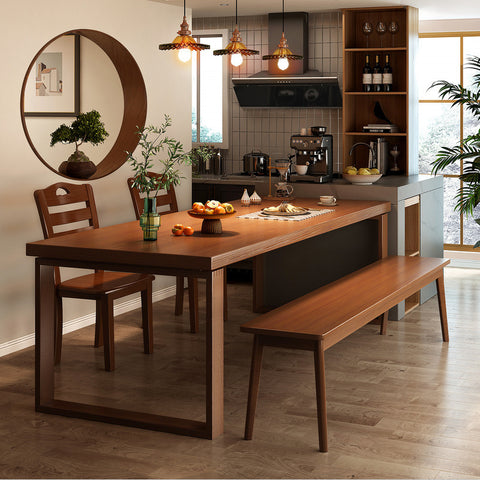
Factors to Consider When Choosing a Multifunction Table
Space and Size
- Assessing Your Available Space: Before making any decisions, take a thorough assessment of the space where you plan to place the multifunction table. Consider not only the footprint of the table when it's at its smallest size but also the space it will occupy when fully expanded or converted. Use a tape measure to get accurate dimensions of the area, and don’t forget to account for extra space needed for chairs and for people to move around comfortably. This step is crucial in small living spaces where every inch counts.
- Choosing a Size That Fits: Once you have a clear understanding of your available space, you can determine the size of the table that will best fit. If you're limited on space, look for a table that has a small footprint but can be expanded or extended when needed. For those with more room, you might consider a larger table that can serve multiple purposes simultaneously, such as a dining table that can also function as a workspace. Remember, the goal is to find a table that serves your needs without overwhelming the room or making it feel cramped.
Keep in mind that the table's size should complement how you intend to use it. For example, if you plan to use the table primarily for dining, ensure it can comfortably seat the number of people you typically host. Conversely, if it's intended mainly as a workspace, make sure there's ample surface area for your work essentials.
Practical Tips:
- Visualize the Space: Use painter’s tape to mark out the dimensions of the potential table on your floor. This visualization can help you better understand how the table will fit into your space and how much room it will occupy when in use.
- Consider Multi-stage Options: Some multifunction tables offer more than two stages of adjustment (e.g., coffee table height, dining height, and standing desk height). These options can provide even greater flexibility, especially in spaces that serve multiple functions throughout the day.
- Check for Easy Adjustability: Ensure that the mechanism to adjust the table's size or height is easy to use and can be operated by one person. This makes the table more practical and likely to be used to its full potential.
By carefully considering the space and size aspects of a multifunction table, you can ensure that your new piece of furniture enhances your living area's functionality and aesthetic, rather than detracting from it. The perfect multifunction table should adapt to your space and needs, not the other way around.
Material and Durability
- Wood: Wood is a classic choice that offers warmth and natural beauty, making it suitable for a wide range of decor styles. It's durable and can last for decades if well-maintained. However, wood can be susceptible to scratches, stains, and water damage if not properly treated. Hardwoods like oak, maple, and teak tend to be more durable (and more expensive) than softwoods like pine.
Pros:
- Warm, natural aesthetic
- Strong and durable with proper care
- Timeless appeal
Cons:
- Can be prone to scratching and staining
- May require regular maintenance (e.g., oiling, polishing)
- Metal: Metal tables offer a modern look and are extremely durable and sturdy. They're ideal for those seeking a minimalist or industrial aesthetic. Metals like steel and aluminum are commonly used and can be treated or painted to prevent rust and corrosion.
Pros:
- Very durable and sturdy
- Easy to clean and maintain
- Suitable for indoor and outdoor use
Cons:
- Can feel cold or impersonal
- May dent or scratch, with visible wear over time
- Glass: Glass tables bring a sense of openness and light to a space, making them great for smaller rooms where you don't want the furniture to appear too bulky. They are easy to clean and can withstand heat and liquids. However, glass is prone to fingerprints and can chip or crack upon impact.
Pros:
- Creates a sense of space and light
- Heat and water-resistant
- Easy to clean
Cons:
- Shows fingerprints and smudges
- Can chip, crack, or shatter if hit
Importance of Durability and Maintenance
Durability is a key factor, especially for furniture that will serve multiple purposes and be adjusted or moved frequently. A durable table will withstand daily use, wear and tear, and the occasional spill or scratch, maintaining its functionality and appearance over time.
Maintenance is equally important. Some materials require more upkeep than others to look their best. Wood, for instance, may need regular oiling or polishing, while metal might only require a wipe-down with a damp cloth. Consider your willingness to perform these tasks as you make your selection.
Practical Tips:
- Consider Your Lifestyle: Families with young children or pets might prioritize durability and easy maintenance over other factors.
- Look for Quality Construction: Regardless of material, well-constructed furniture is more likely to endure. Check for sturdy joints, smooth operation (in the case of adjustable or expandable tables), and a well-applied finish.
- Balance Aesthetics and Functionality: Choose a material that complements your decor while meeting your practical needs. For example, a glass table might suit a modern apartment, but a solid wood table could be better for a busy family kitchen.
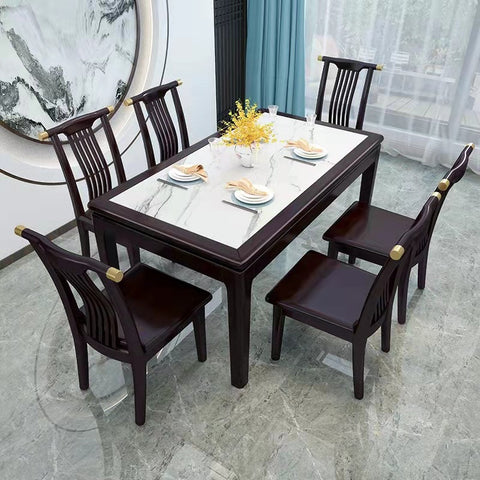
Design and Aesthetics
Matching Your Home Decor
The key to selecting a multifunction table that matches your home decor lies in understanding the overarching style of your space. Consider the colors, textures, and materials prevalent in your room. A table that harmonizes with these elements will feel like a natural addition rather than an afterthought.
- For a cohesive look, identify the dominant design features of your room. Is it characterized by rich wood tones, sleek metal finishes, or glass accents?
- Think about the shape and form of the table. A room filled with angular, contemporary furniture might not suit a curvaceous, ornately detailed table, and vice versa.
Modern vs. Traditional Styles
- Modern: Modern design favors clean lines, minimal ornamentation, and a focus on functionality. Materials like glass, metal, and polished wood are common. A multifunction table with a sleek design, hidden storage compartments, and the ability to adjust with smooth mechanisms would complement a modern aesthetic.
Characteristics:
- Sleek, streamlined shapes
- Neutral color palettes with bold accents
- Innovative use of materials and technology
- Traditional: Traditional decor is characterized by its attention to detail, rich color palettes, and use of natural materials. Furniture often features ornate details and a sturdy, timeless construction. A multifunction table in a traditional home might be made of rich, dark wood with visible craftsmanship, such as carved legs or inlay work.
Characteristics:
- Warm, rich tones and textures
- Elegant, detailed craftsmanship
- Classic forms and materials, such as wood and leather
Tips for Integrating Your Multifunction Table:
- Balance Function and Form: Ensure the table serves its intended purpose while also fitting the aesthetic of your space. It's possible to find a table that hits the sweet spot between practicality and beauty.
- Consider Transitional Pieces: If your home blends multiple styles, look for a table that can bridge the gap between them. Transitional furniture often combines the clean lines of modern design with the warmth and detail of traditional pieces.
- Accessorize Wisely: How you accessorize the table can also help it blend with your decor. Modern homes might prefer minimalist accessories, while traditional spaces can handle more decorative items.
- Sample Swatches: If possible, obtain material or finish samples before making a purchase. This can help you visualize how the table's materials will look alongside your existing furnishings.
Functionality and Features
- Adjustability (Height, Length):
Adjustability is a hallmark of multifunction tables, allowing them to serve multiple purposes. Height-adjustable tables can transition from a coffee table to a dining or work table, catering to different activities and ergonomic needs. Length-adjustable features, such as drop leaves or extendable panels, enable the table to accommodate more guests or provide additional workspace as needed.
Benefits:
- Versatility: Use the same piece of furniture for different purposes, such as dining, working, or entertaining.
- Space Efficiency: Ideal for small spaces where furniture needs to perform multiple functions.
- Ergonomic Comfort: Adjust the table to the right height for various tasks, reducing strain and increasing comfort.
- Storage Options:
Many multifunction tables come equipped with built-in storage solutions, such as drawers, shelves, or compartments. This feature is invaluable for keeping essentials organized and close at hand, whether it's office supplies, dining utensils, or board games.
Benefits:
- Clutter Reduction: Helps keep the surface clear and items neatly stored away.
- Convenience: Easy access to items you use regularly without having to move to different parts of the home.
- Maximized Space: Utilizes the table's footprint for additional storage, making it perfect for small living areas.
- Ease of Conversion for Different Uses:
The ease with which a table can be converted from one use to another is crucial. This includes how simply it can be adjusted, unfolded, or extended. The ideal multifunction table should require minimal effort to adapt, making it practical for everyday use.
Benefits:
- User-Friendly: Simple mechanisms or intuitive designs ensure that changing the table’s function is straightforward and quick.
- Flexibility: Easily switch between functions to suit different activities, from work or study to dining or crafting.
- Time and Energy Efficiency: Save time and avoid frustration with a table designed for hassle-free conversion.
Practical Tips for Choosing a Multifunction Table:
- Identify Your Primary Needs: Consider what functions are most important for your lifestyle. Do you need a table that can convert into a large dining surface, or are you more in need of a compact work-from-home solution?
- Test the Mechanisms: If possible, try out the table before purchasing to ensure the adjustability and conversion mechanisms operate smoothly and meet your expectations.
- Consider the Space: Make sure the table fits your space in all its configurations. Measure your area and compare it to the table's dimensions when fully extended or adjusted.
- Look for Durable Construction: Since these tables will be adjusted and converted frequently, opt for models known for their sturdy construction and reliable mechanisms.
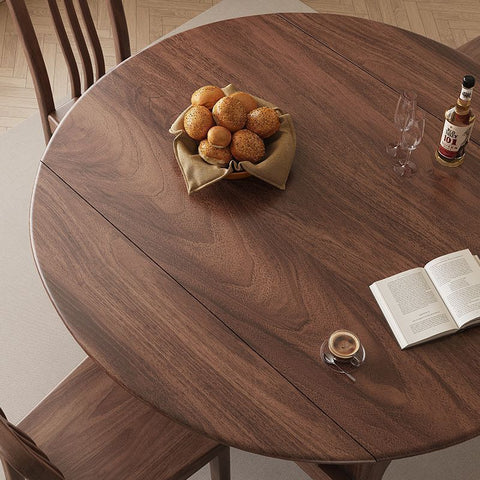
Budget
- Price Range of Multifunction Tables:
The price range for multifunction tables can vary significantly, starting from more affordable options in the lower hundreds to premium models that may cost several thousand dollars. The variation in price is often reflective of the table's material quality, design complexity, brand reputation, and the sophistication of its adjustable or convertible features.
- Affordable Range: These tables may have basic adjustability or storage features, made from less expensive materials such as laminated particle board or metal. Prices might range from $100 to $500.
- Mid-Range: Offering a balance between quality and price, these tables are typically made with better materials like solid wood or higher-grade metals and come with more advanced features like smoother adjustability or additional storage. Prices can range from $500 to $1,500.
- High-End Range: These premium tables are designed with superior craftsmanship, using top-quality materials and offering the best in terms of functionality, durability, and design. Expect prices to range from $1,500 to $5,000 or more.
- Balancing Cost with Quality and Features:
Finding the right balance between cost, quality, and features requires careful consideration of your priorities and how the table will be used in your home.
- Assess Your Needs: Identify which features are most important to you. If adjustability and durability are key, it might be worth investing in a higher-quality table that will last longer and better serve your needs.
- Consider Long-Term Value: A more expensive table that is durable and versatile can offer better long-term value than a cheaper option that may need to be replaced sooner.
- Look for Reviews: Customer reviews can provide insight into the real-world performance and durability of the table, helping you gauge whether it’s worth the price.
- Check for Warranties or Return Policies: These can provide additional value and security for your purchase, making a slightly higher-priced option more appealing.
- Explore Sales and Discounts: Retailers often offer sales, especially during holidays or end-of-season clearances, which can make higher-quality tables more affordable.
How to Maximize the Use of Your Multifunction Table in Small Living Spaces
-
Space-Saving Tips:
-
Choose a Table with Multiple Height Options:
Opt for a table that can be adjusted to various heights, allowing it to serve as a coffee table, dining table, or desk, depending on the need. This eliminates the necessity for multiple pieces of furniture. -
Opt for Built-In Storage:
Select a table that includes storage options like drawers or shelves. This can help keep your space organized and clutter-free by providing a place to store essentials within easy reach. -
Look for Foldable or Extendable Features:
A table that can be folded down or extended provides flexibility. Use it in its compact form for everyday use and extend or unfold it for entertaining guests or when more surface area is needed. -
Creative Uses in Small Apartments:
-
Dining Table to Work Desk:
Use the table as a dining area during meal times and convert it into a workspace during the day. Ensure there's enough lighting and the table is at a comfortable height for working. -
Coffee Table to Entertainment Center:
A low-height multifunction table can serve as a coffee table when relaxed in the living area and transform into an entertainment center for movie nights, supporting a projector or holding snacks and drinks. -
Entryway Console to Dining Table:
Place a foldable or extendable table near the entryway to serve as a console for keys and mail. When needed, extend it into the living space to create a dining area. -
Crafting and Hobby Table:
Use the table for hobbies or crafting, taking advantage of storage options for supplies. When not in use for these activities, it can easily revert back to its primary function. -
Bedside Table to Breakfast Nook:
In extremely tight spaces, a small, adjustable table can serve as a bedside table that, in the morning, can be moved and adjusted to create a cozy breakfast nook.
Practical Considerations:
- Adjustable Accessories: Invest in accessories like adjustable chairs or stools that complement the table's versatility.
- Protective Coverings: Use mats or covers to protect the table's surface during crafts or meals.
- Regular Rearrangement: Don't be afraid to regularly change the table's location or configuration to suit your changing needs, keeping the space fresh and functional.
For Home Offices
- Organizing a Multifunctional Workspace:
- Define Your Space: Even if the multifunction table is used for various tasks, define a specific area on the table for work. Use organizers, trays, or designated zones to separate work items from other uses.
- Utilize Vertical Space: If your multifunction table comes with storage options or if you can add shelving above it, make the most of vertical space. This is great for keeping office supplies, documents, and reference materials within reach but off the work surface.
- Cable Management: Incorporate solutions for managing cables and cords to keep the workspace tidy and safe. Use cable clips, cord organizers, or even a simple box under the table to hide power strips and excess cables.
- Flexible Storage Solutions: Opt for storage options that can be easily adjusted or moved. Baskets, bins, and portable caddies can hold office supplies and can be stored away when the table’s function changes.
- Ergonomic Setup for Productivity:
- Adjustable Height: If your multifunction table has adjustable height, set it to an ergonomic level that reduces strain on your wrists and shoulders while typing. The ideal height allows your arms to form a 90-degree angle at the elbow.
- Appropriate Chair: Pair your table with a chair that supports an ergonomic posture. Look for chairs that offer adjustable height, lumbar support, and allow your feet to rest flat on the floor.
- Monitor Position: If using a computer, position the monitor at eye level to avoid neck strain. Use a monitor stand or adjustable arm if needed to achieve the correct height.
- Lighting: Ensure your workspace is well-lit to reduce eye strain. Position the table to take advantage of natural light if possible, and supplement with a desk lamp that offers adjustable brightness and positioning.
- Take Regular Breaks: Incorporate elements that encourage you to take breaks, such as a small plant, a timer for stretching, or even a designated area on the table for a quick non-work-related activity.
Practical Tips:
- Invest in Quality Accessories: Ergonomic accessories like keyboard trays, footrests, or wrist rests can significantly enhance comfort and productivity.
- Keep It Flexible: Remember, the benefit of a multifunction table is its versatility. Keep the setup flexible so you can easily transition the table for other uses as needed.
- Stay Organized: Regularly declutter your workspace to maintain efficiency and focus. This is especially important in a multifunctional setting where the table may serve various purposes throughout the day.
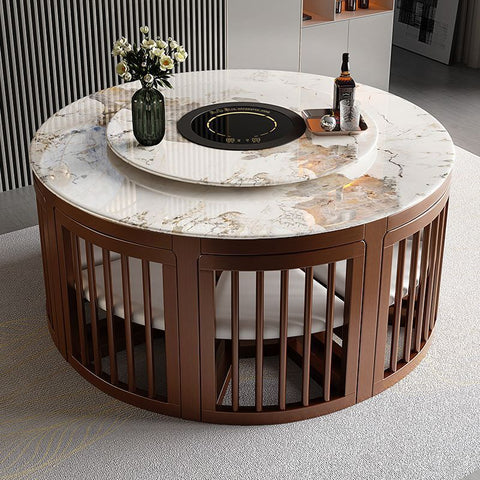
Transforming for Guests
- Adjustable Size: Many multifunction tables are designed to expand or extend, allowing you to accommodate more guests as needed. Before the guests arrive, extend the table to its full size to ensure there's ample seating space. This feature is particularly useful for dinner parties or family gatherings, providing flexibility depending on the number of guests.
- Versatile Seating: Pair your table with stackable or foldable chairs that can be easily stored when not in use. This approach ensures that you won't clutter your space with excess seating but can still offer comfortable accommodations for your guests when necessary.
- Table Setting and Decor: Transform the ambiance of your space by using table linens, centerpieces, and mood lighting. A well-decorated table sets the tone for the evening and can make even a simple gathering feel special. Consider versatile decor items that can be easily stored or used around the house when not in use for entertaining.
Storage Solutions for Dining Essentials
- Built-In Storage: Opt for a multifunction table with built-in storage compartments for easy access to dining essentials such as cutlery, napkins, and placemats. This feature keeps these items out of sight but readily available, helping maintain a clutter-free space.
- Nearby Shelving or Cabinets: Utilize shelving units or cabinets close to your dining area to store larger items like serving dishes, glassware, and table decorations. This approach keeps your essentials organized and within easy reach without overcrowding your multifunction table.
- Decorative Storage Baskets: Use stylish baskets or containers to store and organize items such as table linens and small decor pieces. These can be kept on lower shelves of your table or in a nearby storage unit, offering an aesthetically pleasing way to keep essentials handy.
- Multi-Purpose Accessories: Invest in dining accessories that are both functional and decorative, such as beautiful ceramic containers that can serve as both storage and centerpieces. This strategy reduces the need for separate storage and decoration, making setup and cleanup easier.

Cleaning and Care for Different Materials
Wood:
- Cleaning: Use a soft, damp cloth to wipe the surface. For tougher stains, a mild soap solution can be used, but avoid soaking the wood. Always dry the surface immediately after cleaning to prevent water damage.
- Maintenance: Apply a wood conditioner or polish every few months to nourish the wood and maintain its shine. Avoid placing hot items directly on the surface; use coasters or trivets instead.
Metal:
- Cleaning: Wipe with a damp cloth and, if necessary, a mild detergent. Rinse with a clean, damp cloth and dry thoroughly. For stainless steel, use a specific cleaner to avoid streaks.
- Maintenance: Check periodically for scratches or rust. Treat any signs of rust immediately with a rust remover and protect the surface with a metal polish or wax.
Glass:
- Cleaning: Use a glass cleaner or a mixture of vinegar and water to clean the surface. Wipe with a soft, lint-free cloth to avoid streaks.
- Maintenance: Be cautious of scratches. Avoid placing sharp objects directly on the glass, and consider using a tablecloth or placemats to protect the surface.
Laminate and Veneer:
- Cleaning: Clean with a damp cloth and mild detergent. Avoid excessive water, as it can cause the laminate to swell or peel.
- Maintenance: Protect from scratches and heat. Use protective mats under hot dishes and place mats to prevent wear and tear.
Longevity Tips for Multifunction Tables
- Avoid Direct Sunlight: Prolonged exposure to sunlight can fade and damage materials like wood and fabric. Position your table away from direct sunlight or use window treatments to minimize exposure.
- Use Protective Covers: When not in use, especially for outdoor multifunction tables, consider using a protective cover to shield against weather and environmental damage.
- Regular Inspections: Periodically check for loose screws, damaged parts, or wear and tear. Tightening screws and fixing minor damages promptly can prevent further deterioration.
- Adjustable Components: For tables with adjustable or moving parts, ensure these mechanisms are kept clean and lubricated (if applicable) to maintain smooth operation.
- Weight Distribution: Be mindful of the weight placed on your table, especially for extendable or foldable parts. Distribute weight evenly to avoid warping or damage to the mechanisms.
Conclusion
In conclusion, this guide has explored the multifaceted world of multifunction tables, offering insights into their versatility, types, and the factors to consider when choosing the perfect one for your home. We've delved into the importance of space and size, material and durability, design and aesthetics, functionality and features, and budget considerations. Furthermore, we've provided strategies for maximizing the use of your multifunction table in various contexts, from small living spaces and home offices to dining and entertaining. Additionally, care and maintenance tips ensure your table remains a lasting and stylish component of your home decor.
Multifunction tables stand out as a testament to innovative design, blending functionality with style to meet the evolving needs of modern living. Whether you're pressed for space or simply seeking a piece of furniture that can adapt to multiple uses, a multifunction table offers a practical and elegant solution. It embodies the essence of versatility, enabling you to transform your living space to suit your daily needs and special occasions.
As we wrap up, let this guide inspire you to consider a multifunction table as more than just a piece of furniture; see it as a versatile addition that can enhance your home's functionality and aesthetics. Whether you're working from home, enjoying a meal with family, or entertaining guests, a multifunction table adapts to your lifestyle, making it an indispensable part of your living space.
Embrace the creativity and flexibility that a multifunction table brings to your home. It's an investment in both form and function, promising to enrich your living environment for years to come.
FAQs:
-
What defines a multifunction table, and why is it essential for modern living?
- A multifunction table is designed to serve multiple purposes, providing the versatility needed in today's fast-paced and space-conscious world. It can transform from a workspace to a dining table or fold away when extra space is needed, offering a cost-effective solution to minimize clutter and maximize functionality in any home, regardless of size.
-
What should I consider when choosing a multifunction table for my home?
- When selecting a multifunction table, consider the available space and size requirements, the table's material and durability, its design and how it complements your decor, the functionality and features it offers (such as adjustability and storage), and your budget. These factors will help ensure the table meets your needs and blends seamlessly with your home's aesthetic.
-
How do I maximize the use of a multifunction table in a small living space?
- Opt for a table with multiple height adjustments, built-in storage, and foldable or extendable features to save space and reduce clutter. Use it creatively for various purposes throughout the day, such as a desk, dining area, or entertainment center, and invest in adjustable or foldable chairs for additional space-saving.
-
What are the best materials for a multifunction table, and how do I care for them?
- The best materials depend on your preferences and needs, ranging from durable woods, modern metals, to elegant glass. Care involves regular cleaning with appropriate products for each material (e.g., damp cloth for wood, glass cleaner for glass) and maintenance tips like using coasters to prevent stains and protecting the table from excessive sunlight.
-
How can a multifunction table enhance my home office or dining experience?
- In a home office, a multifunction table can provide an adjustable and organized workspace with storage for supplies, promoting productivity and comfort. For dining, tables with expandable sizes and built-in storage for dining essentials can transform from a casual eating area to an elegant space for hosting guests, making every meal an occasion.


